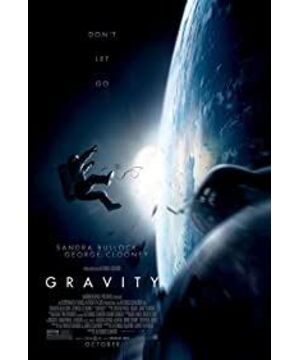Fifty years ago, Jacques Levitt predicted in the "Cinema Manual": Directors will learn how to occupy the entire plane of the screen at some point, and use their passion to control this plane and play a game. A game that is both closed and unlimited. Fifty years later, the Hollywood industry is using its desperate invention-CGI (Computer Generated Graphics) technology to win over and hijack the hearts of movie fans all over the world. From "Avatar", "Hugo", "Youth School", to "Gravity", which is currently being screened globally, we see this plane constantly changing its appearance, turning decay into magic, presenting those visions that we have never heard of. Spectacle.
■Gender order and human salvation
"Gravity" is the seventh work of Mexican director Alfonso Cuarón. The story structure is similar to the previous work "Son of Humanity". It tells a story of escape from a tiger's mouth, but the location of this story. From the earth to a space station. As a Mexican director, Alfonso Cuarón's previous works often carry a strong local color, projecting attention on the gender order, and expounding the important role of female images.
The birth of Mexican films and the establishment of the nation-state are synchronized in time. The protagonists in the "Golden Age" films are often Mexican cowboys full of masculinity, who act boldly and have no lack of iron and tenderness. This establishes the core cultural value of Mexican national films (such as Banderas in "Once Upon a Time in Mexico"). However, Alfonso Cuarón revises this traditional national myth by reshaping female roles. For example, in "Same as Your Mother", the two boys planned a trip, originally intending to seduce a mature woman Louisa, but in the second half of the journey, women gradually took the initiative and re-established the principles and order of getting along with each other; "Son of Humanity" The main line of "" is to preserve the glimmer of hope for the survival of human beings by protecting the safety of a black woman. It is not difficult to see that Alfonso Cuarón has been committed to reshaping the gender order in national culture.
"Gravity" is still the same. When the only female survivor miraculously operated the Tiangong No.1 guided by Chinese; when she returned to the earth and staggered to stand up against the gravitational drag, the passionate music sounded, and an enlarged and omnipotent female image suddenly "leaped onto the screen." ". This is exactly the same as Louisa Korst in "Same as Your Mother" and the black girl in "Son of Man", women finally completed the impossible task. It should be said that this method of emphasizing the image of women and deliberately revising the national male myth is also a landmark move by Alfonso Cuarón deliberately reshaping the national allegory. It is worth mentioning that there is a religious ritual in the film. Sandra Bullock curls up in the return cabin of the space station and enters a state of meditation. At this time, if the picture is frozen, the return cabin is regarded as a woman's womb, and the heroine is regarded as a conceived baby, then this scene is somewhat of a rebirth, which is in the same line as the ending of "Son of Man", female or motherhood , Seems to be the leader and savior of the process of human society in the director's view of history.
■Long lens and visual space
When it comes to Alfonso Cuarón, the audience will definitely associate it with the long lens. In today's Hollywood movies tend to edit quickly, pursue maximum visual pleasure, and each shot is only 2 seconds on average, Alfonso Cuarón obviously prefers long shots. The average lens length of his works has increased from about 6 seconds in the early days of "Love in Hysteria" and "Great Expectations" to 19.6 seconds in "The Same for Your Mother" and 16 seconds in "Son of Man", and passed "Son of Man". Those eye-catching long shots have increased its international reputation. I believe that if the producer hadn't seen Alfonso Cuarón's long-shot aesthetic exploration in "Son of Man", I am afraid they would not have given a big production such as "Gravity" to a Mexican director. To this day, countless movie fans are probably still talking about the long shots in the film that have depth of field, extremely difficult scene scheduling, and full of violent scenes.
Of course, Alfonso Cuarón's new work "Gravity" also continues his established long-shot technique, but this time it is more proficient. I believe that the audience will be dumbfounded by the 16-minute long shot at the beginning of "Gravity". The director uses CGI technology to change the angle of view of the camera many times and stitch it together into a "complete" long shot. From Sandra Bullock's subjective perspective to George Clooney, and then transformed into an omniscient objective perspective, all in one go, creating a more real space and a more continuous sense of time. Photographer Emmanuel Rubeschi, a long-term collaborator with Alfonso Cuarón, said that the smooth long lens can create a naturalistic style and a real feeling similar to that of a documentary.
This sense of continuity of time and space is more obvious in space. For example, Lubeski used the mid-range shot of the high-speed flying satellite wreck to throw Sandra Bullock out of the space station orbit, and then used the panoramic view to capture her spinning and flying into the depths of space, and then the camera gradually narrowed the distance with the heroine. From the panoramic view to the middle shot, and then to the close shot, until the audience sees a close-up of Sandra Bullock's face. Subsequently, the camera "passed" through the space suit mask, capturing her rapid breathing and horrified eyes, and finally pulled back to the panorama to locate the location of the characters, the space station and the earth. The director took a full ten minutes to record this process. It seems that he wants to stretch the screen time closer to the real time, so that the audience can get a more coherent, real, tense and objective viewing experience. The long lens enlarges the sense of spatial distance in the movie, and also extends the realism of time, making it easier for the audience to empathize with the subtle changes in the protagonist’s mood in the vast space.
■Visual Wonders and "Future Movies"
At the beginning of the release of "Gravity" in North America, "Time" was full of beautiful words, "It is the glory of the future of film Film Festival Future Digital Film Award) or the label of Wonder Movie. It should be said that "Gravity" is an attempt by director Alfonso Cuarón. He abandoned the more or less sci-fi elements in the previous space travel movies and restored the vast view of the artificial satellite from a bird's eye view of the earth with the help of CGI technology. It simulates the weightless state of being out of gravity, and finds a balance between the restoration of reality and the presentation of wonders.
Alfonso Cuarón confessed that he refuses to draw nourishment from scientific inferences such as "Big Bang", "Extra-Dimensional Space" or "Parallel Universe", and does not want to make another "2001 A Space Odyssey" or "Solar" "Rees"; but based on the space documentary "Hubble Telescope", which tells the US NASA astronauts brought IMAX cameras into space, and truly recorded the entire process of restoring the Hubble Telescope. In "Gravity", the aerial shots of the earth in the orbit of the satellites, the design of the spacecraft and the International Space Station, the way astronauts move in space, and their wonderful and crazy behaviors and reactions under zero gravity are all taught by " Hubble. This shows the director's determination to break away from the sci-fi film label, focus on the presentation of the real landscape, and pay attention to the real experience of the audience.
It should be said that "Gravity" is a spectacle movie with a consumer function. The essence of Wonder Movies is consumerism. It focuses on user experience, emphasizes "commercial discourse", and emphasizes that movies are an industry and ideological battlefield. They should compete freely and survive in the market rules. From "Youth School" to "Gravity", we have seen that when Hollywood explores the unique characteristics of new technology, it also integrates it into standard work practices and style functions. Whether it is Chinese director Ang Lee or Mexican director Alfonso Cuarón, they can easily use CGI technology to homogenize the visual effects of their movies. Hollywood technology and audiovisual language seem to be transforming into a "universal language." Movies are becoming more and more like a kind of auditory illusion magic. With its mechanical repeatability and illusion, the basic task of the movie is to provide audio-visual pleasure that can be shared with the audience. We were surprised to find that Alfonso Cuarón, who had the ambition to reshape the national allegory and tried to regain cultural lost ground from Hollywood, now began to obey the historical evolution of movie watching rituals and viewing pleasure, using what he learned from Hollywood industry The "business discourse" manufactures consumer goods and has already become a part of the global visual wonder.
"Hainan Daily"
View more about Gravity reviews










